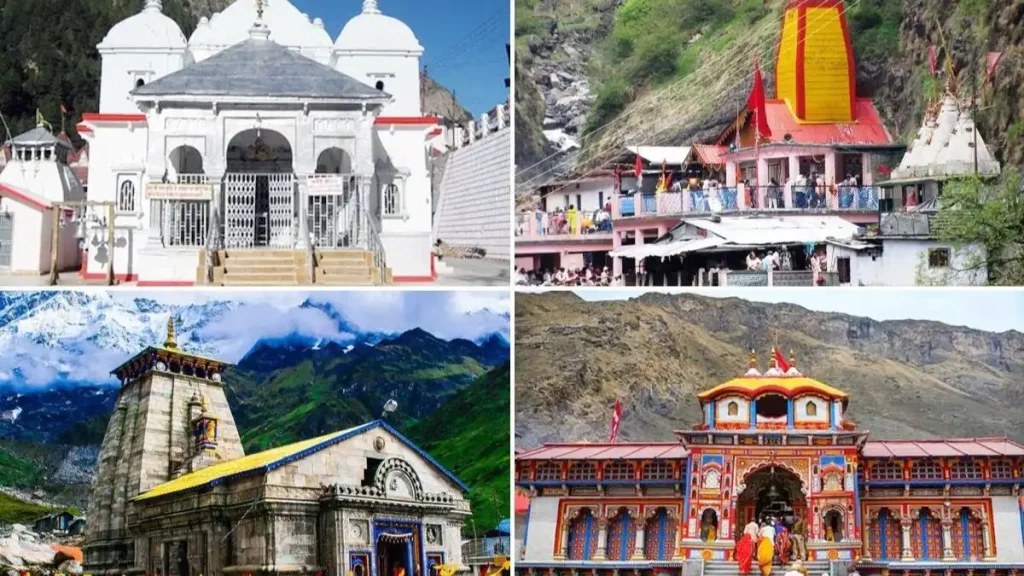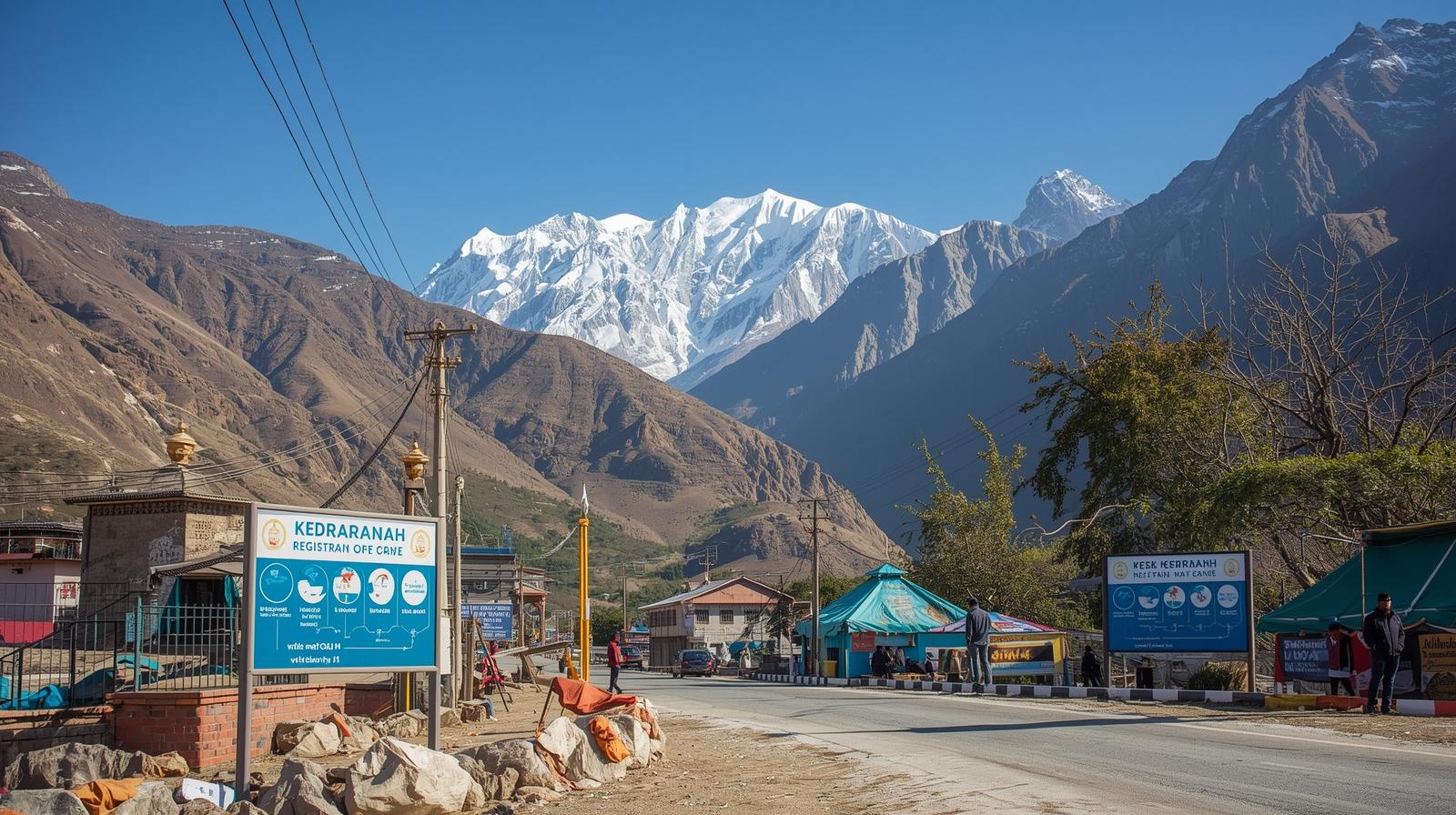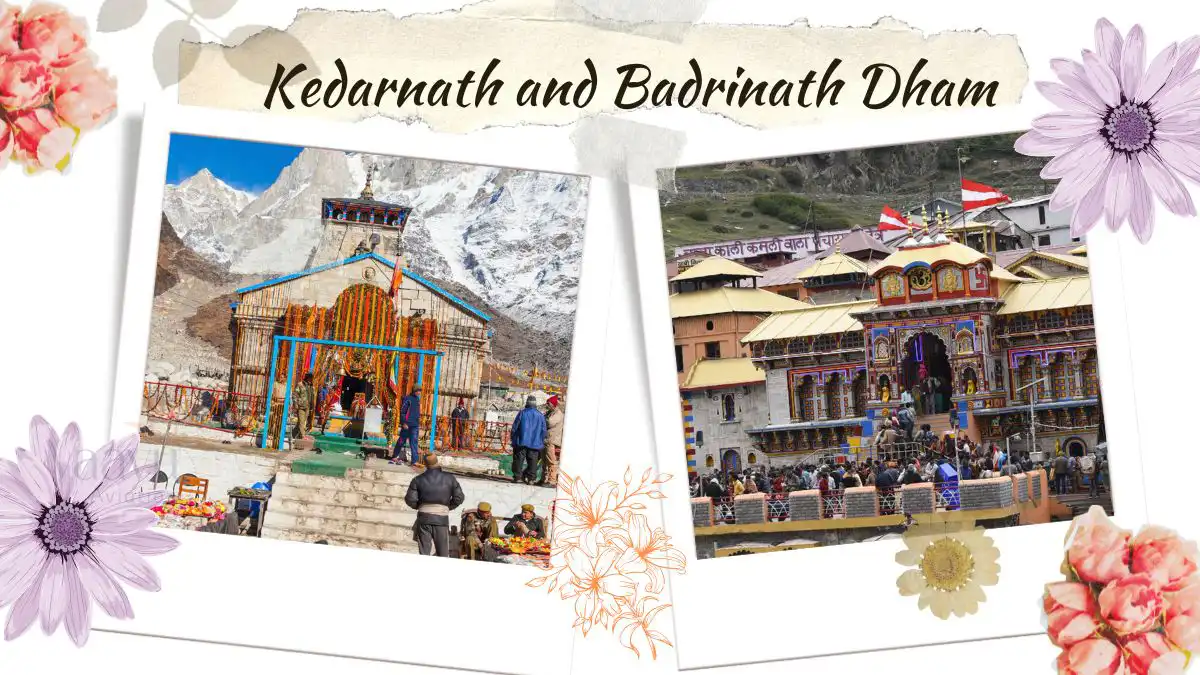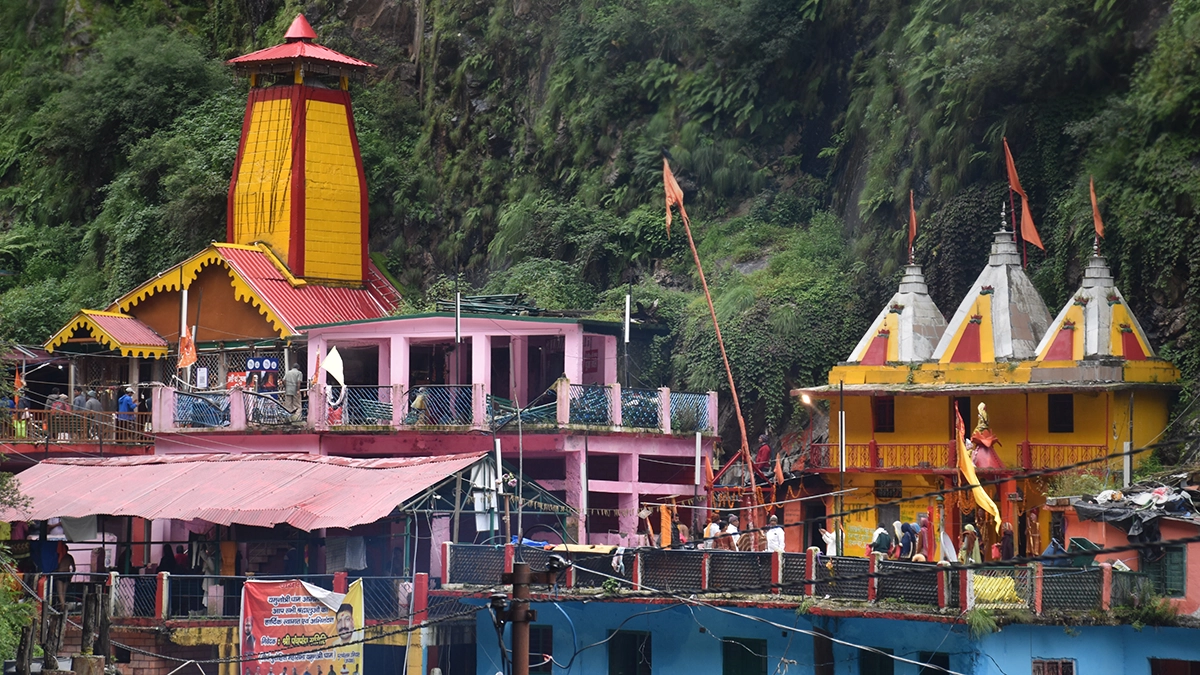The Chardham Yatra, one of the holy pilgrimages in Hinduism, takes devotees to four shrines perched in the Himalayas mountain ranges. These temples are Yamunotri, Gangotri, Kedarnath, and Badrinath. This spiritual journey, which is immense, has a meaningful representation for the pilgrims who take it, earning blessings, purification, and spiritual enlightenment. In this post, we will learn about the Chardham Temples, the Chardham Circuit, the best time to travel, and other essential details.
Significance of Chardham Yatra
The Chardham Yatra, known by many names as the path and the journey to the abodes of God, is a centuries-old pilgrimage steeped in Hindu traditions and spiritual beliefs. It occupies a very prominent place in Hindu mythology. Each of these destinations is the abode of a deity.
According to Hindu belief, completing the Chardham Yatra will remove sins from one’s soul, thus liberating the soul from the cycle of life and death. Hindus consider it as a moral obligation to visit this pilgrimage at least once in their lifetime to seek spiritual peace and get divine blessings.
Detailed Information about the Chardham Yatra Temples
Here is the detailed list of Chardham Yatra Places to visit in Uttarakhand:
1. Yamunotri Dham
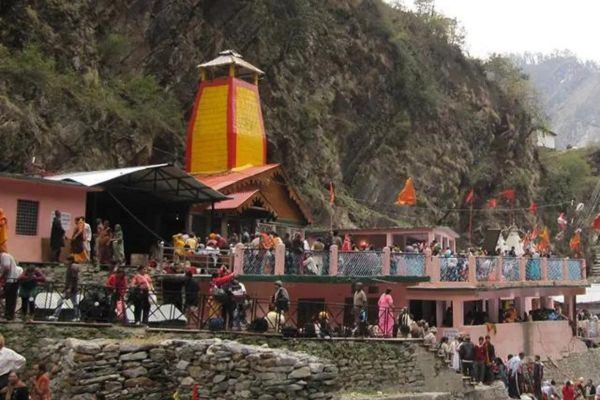
Yamunotri is the origin of the Yamuna River and a shrine of the river goddess Yamuna. Located at an elevation of 3,293 meters above sea level, Yamunotri Dham is dedicated to the Goddess Yamuna who is the daughter of the God Sun. The temple has been built on the western side of the holy Garhwal Himalayan ranges. One can reach temple via a trek from Hanuman Chatti that starts here.
The motorable roads are all the way to Janki Chatti, and it is a hard trek of 5/6 km commencing from here to the divine shrine of Yamuna Devi. One can opt for a pony or a palanquin to escape the troubles of the trip. Even the trek to reach there through the fantastic Himalayan scenery and challenging walkway is an experience of its own.
2. Gangotri Dham
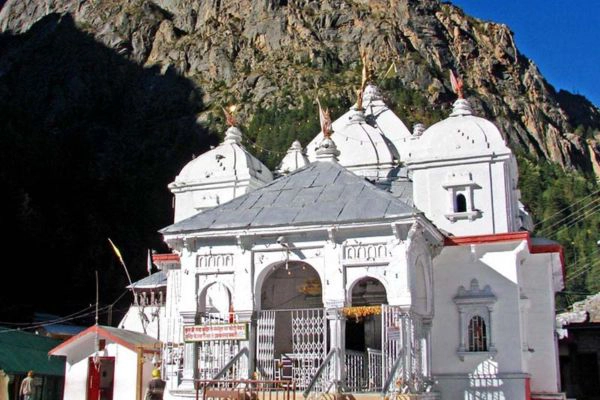
Gangotri Dham is settled at 3,100 meters above sea level, Gangotri Temple worships Goddess Ganga, the holy river in Hinduism. The temple is in tranquil surroundings near the Ganges River, originating in Uttarakhand. Hindu mythology claims that the Ganges (or Ganga) is the holy river that came from heaven to earth at Gangotri, where Lord Shiva released a forceful flow from his hair. The river’s source is at Gaumukh in the Gangotri glacier, which is 19 km away from Gangotri, and one can access it by trekking.
3. Kedarnath Dham

One of the sacred temple pilgrimages of India is Kedarnath Dham, located high in the mighty Himalayas and also one of the Chardham Yatra temples. Among the twelve Jyotirlingas, Kedarnath is one of the most important worshiping temples of Lord Shiva In India. Located 3583 meters above sea level, the temple is a holy site, and at Phata or Sersi, you can reach it uphill by any of the methods—trekking or a helicopter ride.
The temple is ancient, with finely sculpted architecture, and made entirely of large and even-shaped grey stone tiles. The conical rock inside the temple is Lord Shiva in his “Sadashiva” form. Further the best time to visit Kedarnath Dham is in the summer months of May to June and after the monsoon season from September to November.
4. Badrinath Dham
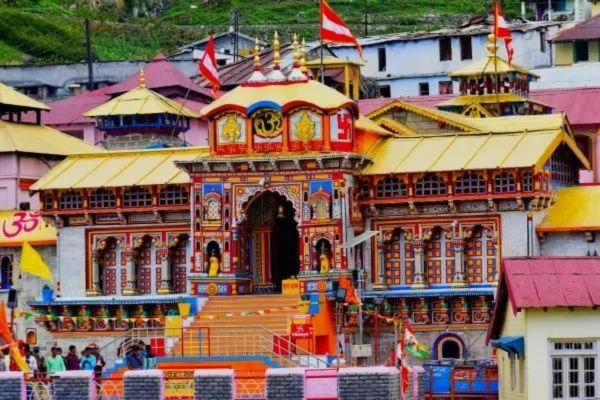
Badrinath Temple is located at an elevation of 3,133 meters. Badrinath Dham or temple is a shrine for Lord Vishnu, who sustains the universe. It is on the banks of the Alaknanda River in the Garhwal Himalayas and is well-known for its colorful structure and spiritual atmosphere. The temple is believed to have been built by sage Adi Shankaracharya in the 8th century. The temple welcomes devotees of Lord Vishnu during the six months when it is open each year. In winter, it gets difficult to get to it as heavy snowfall makes it inaccessible.
The best time to visit Badrinath Dham is from May to June and September to November. The opening date of the chardham Yatra is on 30 April 2025.
Chardham Yatra by Road
The Chardham Yatra one can undertake by road offers pilgrims the privilege of traveling along beautiful landscapes and charming Himalayan towns. Ideally, the trip begins at Haridwar or Rishikesh and takes the pilgrim through the established path, which involves visiting all the four holy shrines. Pilgrims can use public vehicles or private cars for their convenience. They can also avail the service of shared-taxis or bus and arrive at the desired stop. Further, the Chardham Yatra Route Map guide will help you to proper guidance and route for Yatra.
Chardham Yatra by Helicopter
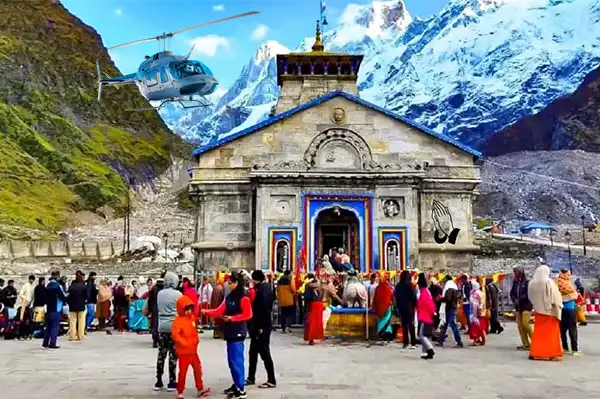
Chardham Yatra by helicopter offers pilgrims a unique way to journey to the holy temples. This means of transportation is a fast and convenient substitute for traditional road routes or walking. The helicopter services are mostly comfortable, time-efficient and accessible to those pilgrims who seek easy ways or have physical limitations.
Helicopter transportation for the Chardham Yatra usually begins from Dehradun. Hence, this allows devotees to effortlessly overcome the inevitable challenges posed by the rugged terrain and long-distance trips. Pilgrims can choose the helicopter package that suits them both in terms of their preferred idea. So this includes choosing their selection of the specific temple, where there can be a one-way or round-trip journey.
Chardham helicopter travel drastically cuts the time of travel. Also, pilgrims can cover long distances of hundreds of kilometers in just a couple of hours. This is for people who cannot stand long hours for long periods, old pilgrims, or those with limited time. Reservations in advance and observing all the safety instructions given by helicopter operators are advisable for the pilgrims.
*Chardham Yatra Registration is mandatory for all devotees of Yatra.*
Best Time to Visit Chardham Yatra
You must choose the right time and season to complete the Chardham Yatra. Generally, the best time to visit Chardham Yatra is during the summer season, from the month of April/May to June.
Pilgrims must avoid the monsoon season from mid-June to September since the region experiences high rainfall. Landslides and floods, which can disrupt the travel experience, are also likely.
The post-monsoon season from September to November, until the temple closes, is ideal for planning your Yatra. The monsoon subsides and it is time for the onset of winter.
Conclusion
The Chardham Yatra is more than just a geographic journey but it is a spiritual saga that is not limited by time and space. It is a path of worship, devotion and discovery, with every step being filled with divine blessings. When pilgrims set out on the holy route they embark on a whole new process of soul transformation, seeking solace, wisdom and communion with the divine.
Frequently Asked Questions
Q1). What are the four famous temples of Chardham Yatra?
Yamunotri, Gangotri, Kedarnath and Badrinath are the temples of Chardham Yatra.
Q2). What is Chardham famous for?
Visiting the Chardham Yatra helps a person to attain salvation and Moksha.
Q3). Is Kedarnath is safe to visit?
Yes, Kedarnath is safe to visit during Chardham Yatra.

